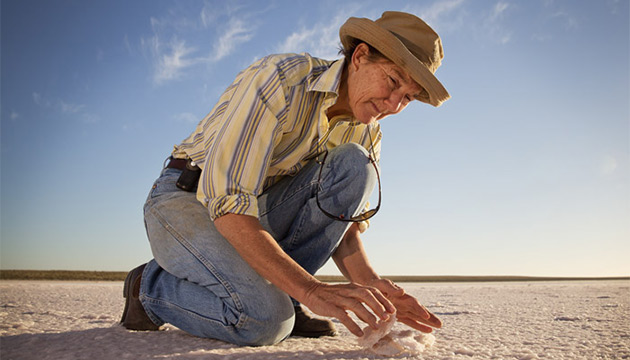With a reputation for doing things differently, Annabel Walsh has reinvigorated Moorna Station.
Story By Nathan Dyer
On a hot February afternoon, Annabel Walsh steps from her HiLux onto the hard grey dirt of Moorna Station. Walking in off the road, the western New South Wales grazier crouches to look at new growth emerging from the parched earth. “They really are amazing,” Annabel says, running her fingers through the soft seed heads of bottle wash grass swaying gently in the breeze.
Although Moorna recorded 50 millimetres of rain a month previously, a heatwave has sucked precious soil moisture into the atmosphere. Even so, a carpet of golden seed heads spreads across the landscape, filling gaps between perennial saltbush and bluebush that pepper the station’s pancake-flat paddocks. “They need more rain, but at least they’ve seeded,” Annabel says.
Continuous grazing since the 1850s has taken its toll on the 26,000 hectares of red-gum forests, black box flood plains and salt land vegetation of Moorna. A property that once shore 100,000 Merinos a season, their fleeces shipped by paddle-steamer to Adelaide, had been reduced to a carrying capacity of 10,000 dry-sheep equivalent when Annabel and husband John ‘Horrie’ Walsh took over in 1983. “People come here and they don’t fully realise the impact of past management, right from settlement,” Annabel says. “European farming systems and river management engineering has not suited our Australian landscapes.”
Hugging the northern banks of the Murray River,
30 kilometres west of Wentworth, the flood plain paddocks of Moorna today appear almost barren. A closer look reveals something extraordinary. Native perennial mulka grasses and bottle washes, river couch, bend grass, yam daisies, samphire, pigface and glasswort have rebounded. “The grasses have been my teachers,” Annabel says.
This Story is from Issue #103
Outback Magazine: Oct/Nov 2015










